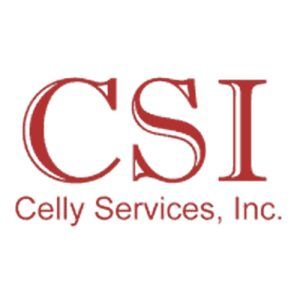Workplace accidents can be expensive for any corporation. Management often can brush away accidents and injuries by stating that it is just part of doing business. Some may look at accidents in terms of the dollar costs of treating injured employees, replacing injured employees, replacing broken machinery, etc. Accident-related expenses often go much deeper than what meets the eye. Hence, the iceberg effect.
The visible tip of an iceberg represents only a tiny fraction of its true impact, just like the immediate costs of an accident. Managers understand the acute impact of workplace injuries — medical bills, damaged equipment and downtime — but the hidden costs lurking beneath the surface are even more devastating.
Accidents come with substantial costs that often go unnoticed until they start piling up. Here are some common ones.
- Loss in Productivity: When an accident happens, work slows down or stops entirely, resulting in delays and inefficiencies. For example, your only transmission mechanic breaks an arm and is gone temporarily for six weeks on disability. You must find a substitute. For calculation purposes, the tech was paid $40/hr. Your labor rate is $240/hour. The $200 differential at 40 hours/week is $8,000 weekly. For six weeks of downtime, you lost $48,000. Lost time is serious money!
- Employee Replacement Costs: If the employee is permanently disabled, you need to hire another mechanic. Lube techs may come easily; a master mechanic is likely more difficult to lure to your store. According to the 2023 NADA Dealership Workforce Study, the average cost to recruit and onboard a new hire is $5,000. Time to fill is another factor, impacting overall costs. According to DHI Group’s Hiring Indicators 2017 Report, the retail industry had a time-to-fill average of 25 days. That’s 25 days of customers waiting for a specialist to repair their vehicle.
- Training Costs: Companies spend significant time and money training new hires in the company standards and their way of conducting business. According to the NADA Study, the average training cost for dealership employees is $1,200. These can spin upward of $10,000 per employee, depending on their skill level and job, according to CBTNews!
- Legal Fees and Fines: Companies may face lawsuits, regulatory fines or settlements, which can be financially draining. OSHA fines and penalties are $16,500 per violation and $165,000 for a willful violation. With nearly 40 years of experience in workplace safety, I am confident that OSHA will find a code violation for a serious accident, roping you into a regulatory morass of appeals, hearings and penalties. Trial lawyers are lurking in the waters, too. If they smell employer culpability that caused a serious accident or harm, they will bypass the workers’ comp judge under some novel theory and head to the Superior Court.
- Equipment and Property Damage: Repairs and replacements for damaged tools, machinery or infrastructure can be costly. Downtime for equipment can create a backlog and loss of productivity. If a customer’s vehicle is damaged during the incident, associated costs may follow, such as providing a loaner until repairs are made.
- Increased Insurance Premiums: Insurance costs often rise after an accident, adding immediate and long-term financial strain to the dealer.
- Emotional and Psychological Impact: Accidents can lower morale, increase stress and lead to long-term emotional effects on employees.
- Reputation Damage: A serious accident can hurt a company’s public image, making it harder to attract employees and even customers. Customers may demand a buyback if a vehicle is damaged during an accident at the dealership.
This is an excellent framework for understanding why proactive workplace safety measures are a financial necessity and not merely compliance. Preventative measures like rigorous safety training, regular equipment maintenance and fostering a safety-conscious workplace culture can significantly reduce these risks. Companies that invest in safety upfront often find that their return on investment (ROI) outweighs the costs of handling accidents after they occur.
DISCLAIMER: The contents of this article are for informational purposes only and are not to be considered as legal advice. Employers must consult their lawyer for legal matters and EPA/OSHA consultants for matters related to environmental health and safety. The article was authored by Sam Celly of Celly Services Inc., who has been helping automobile dealers across the United States comply with EPA and OSHA regulations for over 38 years. Sam is a certified safety professional (No. 16515) certified by the National Board of Certified Safety Professionals. Sam received his BE (1984) and MS (1986) in chemical engineering, followed by a JD from Southwestern University School of Law (1997). Sam is a member of the American Chemical Society (No. 31176063), American Industrial Hygiene Association (No. 124715) and National Association of Dealer Counsel (NADC). Sam also serves on the Board of Orange County American Industrial Hygiene Association and on the California Industrial Hygiene Council (CIHC). Celly Services newsletters can be accessed at www.epaoshablog.com. Your comments and questions are always welcome. Please send them to sam@cellyservices.com.








